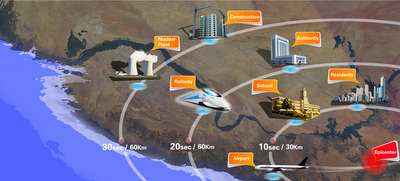
Reporting earthquakes in real time is significant. If earthquakes can be reported to public within a few seconds after its occurrence, areas that seismic waves have not reached will receive early warning and take immediate evacuations and emergency actions.
A geophysics interdisciplinary team at USTC (University of Science and Technology of China) of Chinese Academy of Sciences applies computer fast search technology to develop an earthquake search engine with a large pre-established database and finds the best seismogram match from database within a second. The new technology allows reporting earthquake location, magnitude, and focal mechanism all within a second after receiving earthquake data.
In a simulation test for an area in Xinjiang, the method builds a large theoretical database including more than 47 million of seismograms simulating potential earthquakes. This large database is indexed and ranked using Multiple Randomized K-Dimension (MRKD) Tree algorithm. When an earthquake occurs, the recorded data will be taken to follow a checking sequence on the tree structures and find the best matches on tree branches with the same characteristics. This approach reduces the efforts on comparison about 1000 times faster than exact search.
The idea of earthquake search engine was filed for a technology patent by the USTC team in over 41 countries, and Japan has just approved the patent. China Earthquake Administration (CEA) set up a national project to support the implementation of the new approach in their national earthquake monitoring network.
This three-year research results entitled "Real-time earthquake monitoring using a search engine method" has been published on Nature Communications.

A sketch explaining the idea of earthquake early warning. (Image by ZHANG Jie)

86-10-68597521 (day)
86-10-68597289 (night)

86-10-68511095 (day)
86-10-68512458 (night)

cas_en@cas.cn

52 Sanlihe Rd., Xicheng District,
Beijing, China (100864)

